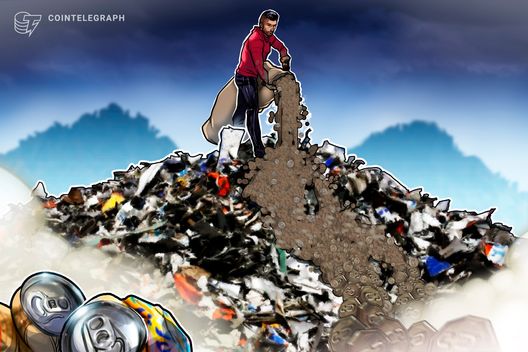

James Howells, the Welsh computer engineer who famously discarded a hard drive containing 8,000 Bitcoin in 2013, is pivoting his strategy from physical recovery to tokenization. After a 12-year saga of searching for the lost hard drive in a Newport landfill, facing repeated rejections from the Newport City Council to excavate the site, Howells is now exploring a blockchain-based solution.
In 2013, Howells mistakenly threw out a hard drive containing the private keys to 8,000 Bitcoins. At the time, these coins were worth relatively little, but as Bitcoin's value soared, the lost hard drive became a digital treasure worth millions. As of today, the stash is estimated to be worth around $915 million. Howells' attempts to recover the hard drive have been consistently rebuffed by the Newport City Council, citing environmental concerns, financial implications, and regulatory hurdles. The landfill site is reportedly 15 meters deep and contains approximately 200,000 tons of waste, making the prospect of recovery extremely challenging.
Despite the obstacles, Howells has persisted in his efforts, exploring various options, including AI-assisted searches and offering a significant portion of the recovered Bitcoin to the city and its residents. He even made a formal offer of between $33 million and $40 million to acquire and excavate the Newport landfill site but received no response from the council. In late 2024, Howells filed a $620 million damages lawsuit against the city council, but the case was dismissed in January 2025.
Now, Howells is shifting his focus to tokenization. He plans to tokenize his legal ownership of the lost 8,000 BTC into a new Bitcoin Layer 2 smart token called Ceiniog Coin (INI). This move comes after a High Court ruling in January 2025 confirmed that while the council may own the physical hard drive, the digital contents, the 8,000 BTC, legally belong to Howells.
The Ceiniog Coin (INI) will leverage an upcoming network update that removes the 80-byte cap on the OP_RETURN opcode in Bitcoin transactions, freeing up space for more functionality. Howells envisions INI as a digital claim on his lost Bitcoin balance, aiming to bootstrap a high-speed, payment-focused Web3 ecosystem backed by Bitcoin. He plans to launch the token after October, with an ICO planned for later in the year.
Howells has clarified that he has not given up on his lost Bitcoin but has simply pivoted his strategy. He is no longer pursuing the purchase or excavation of the landfill or engaging in further dialogue with the council. Instead, he is focusing on creating a DeFi-focused token that represents the value of the lost coins. This approach transforms the physical inaccessibility of the hard drive into a conceptual "vault" accessible through blockchain technology.
While the token will not be backed by spendable Bitcoin, it will function as a digital representation of the original lost stash. Howells previously proposed a tokenized investment model where token holders would receive a share of the Bitcoin if recovery succeeded, but this initiative was shelved after the city remained unresponsive. The new project is not intended to represent ownership of the physical hard drive but rather the symbolic and legal claim to the 8,000 BTC.